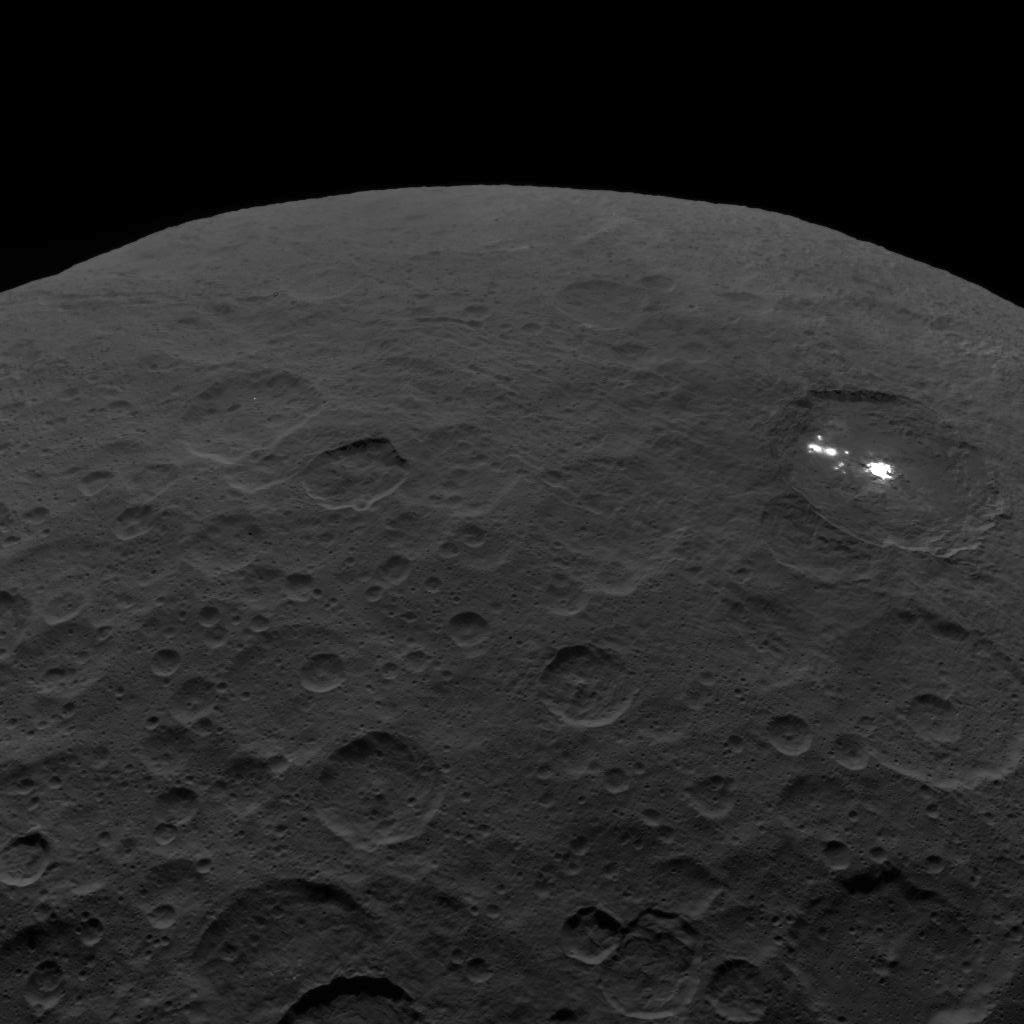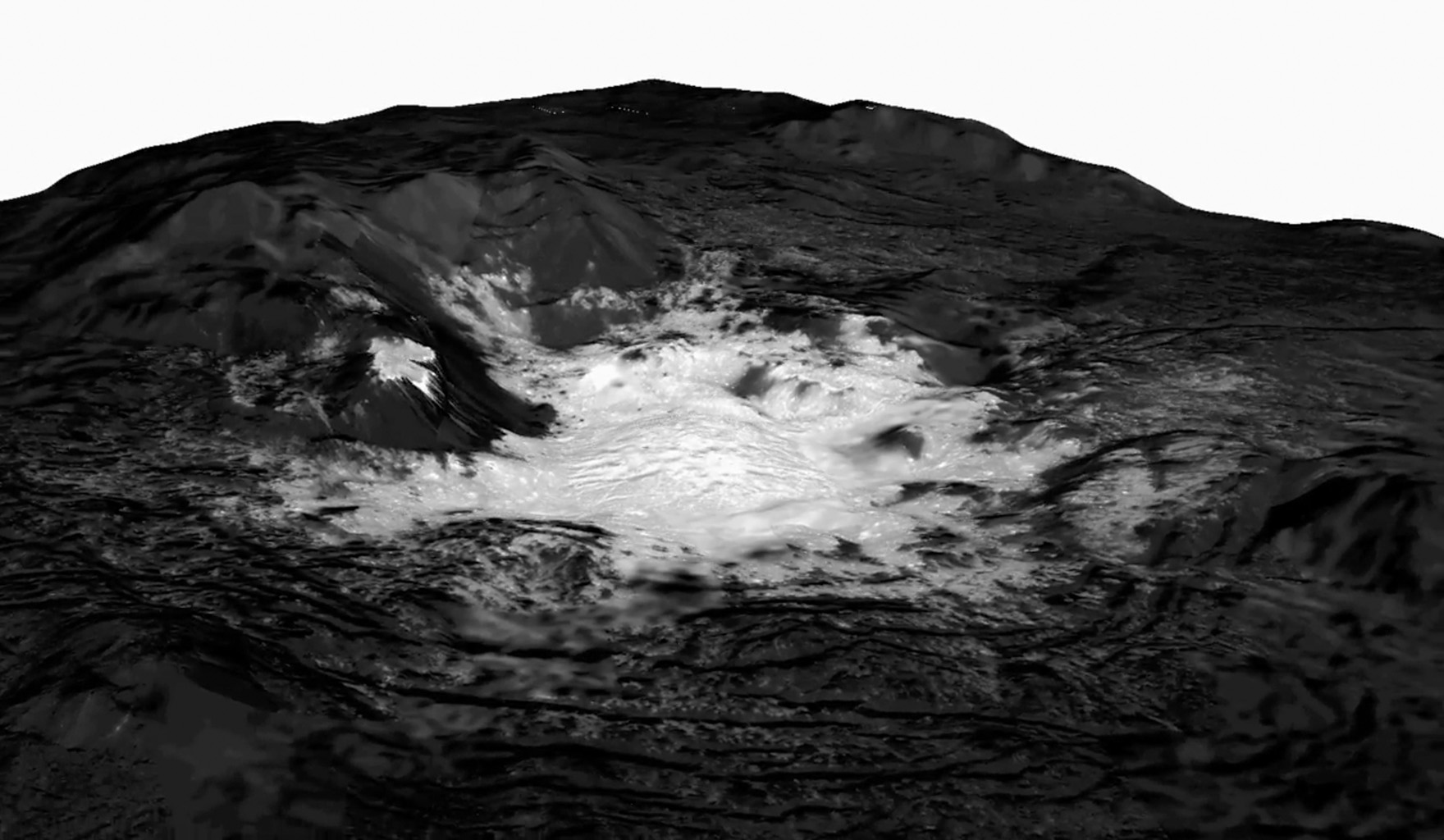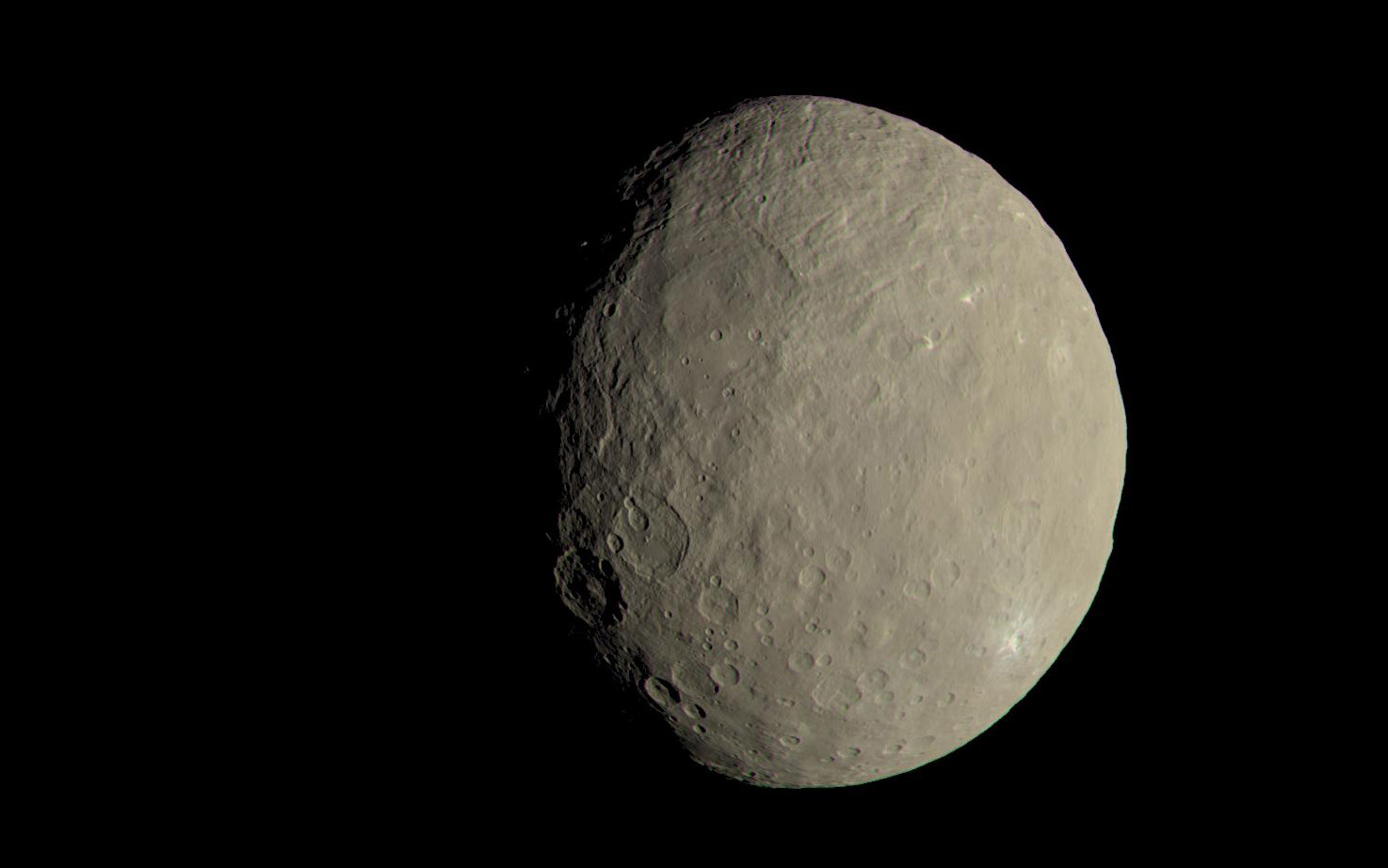Now That Dawn Is History, Should NASA Send Another Mission to Ceres?
Nearly three years since NASA's Dawn mission arrived at Ceres, the spacecraft has run out of fuel. Is it time to start thinking about sending another mission to the dwarf planet?
The $467 million Dawn spacecraft launched in 2007 on a mission to study the two largest objects in the asteroid belt, Vesta and Ceres. After studying the asteroid Vesta from orbit for about a year, it moved on to Ceres, the smallest dwarf planet in the solar system and the largest space rock orbiting in the asteroid belt.
While in orbit at Ceres, Dawn discovered that the dwarf planet sports hundreds of weird bright spots, contains plenty of water ice and has organic molecules (the basic building blocks for life) on its surface. By the mission's end, however, scientists were still left with some big questions about Ceres and what it can teach us about the possibilities of life beyond Earth — questions that could be answered with a follow-up trip to the surface. [Photos: Asteroid Vesta and NASA's Dawn Spacecraft]

"I think the kinds of questions that we are going to be left with will probably require going down to the surface, because there's only so much you can tell from orbit," Paul Schenk, a participating scientist for the Dawn mission with the Universities Space Research Association at the Lunar and Planetary Institute in Houston, told Space.com.
Specifically, Schenk said he would like to see a mission sent to explore Occator Crater, a 57-mile-wide (92 kilometers) crater containing the biggest and brightest of Ceres' spots. Like the other bright spots on Ceres, Occator Crater contains salty deposits that were left behind when briny water sprayed up from underground and then froze on the surface. This discovery by the Dawn mission revealed that the interior of Ceres is warmer than scientists previously thought. In the case of Occator Crater, a recent impact was likely the source of that heat, Schenk said.

The most prevalent mineral at Occator Crater is sodium carbonate, which also happens to be prevalent in places on Earth that show hydrothermal activity — places like Yellowstone National Park "where certain types of bacteria are known to thrive," Schenk said. However, he said that it's "rather unlikely" that microbial life exists on Ceres, because the heat generated from impacts doesn't last long enough for life to evolve. "The impact generates enough heat to melt the ice and create the groundwaters that can then circulate in a central area," he said, but "the zone of heat contracts until the water goes away and freezes up" over the course of tens of thousands to a few million years. Here on Earth, the earliest forms of life arose 700 million years after the Earth formed.
Regardless of whether Ceres is capable of hosting life — a possibility that scientists have neither ruled out nor confirmed at this point — the hydrothermal processes seen on the dwarf planet could help scientists understand similar processes on other bodies in the solar system, like Jupiter's moon Europa or Saturn's moon Enceladus — two of the top contenders for hosting possible life beyond Earth. Features resembling dried-up hydrothermal vents on Mars could also have sustained life sometime in the planet's history. Like the bacteria that live in deep-sea hydrothermal vents on Earth, organisms living in similar geological features on other world don't need sunlight to survive. Instead, they would rely on geothermal energy, like hydrothermal vents and plate tectonics.
Get the Space.com Newsletter
Breaking space news, the latest updates on rocket launches, skywatching events and more!

In the case of Ceres, getting hit with other large space rocks appears to be the source of its geothermal energy. "Hydrothermal reactions with the water are clearly bringing up minerals to the surface," Schenk said. "In order to understand how that process works on other planets, including Mars, going back and understanding that chemistry and that physics — the physical process of what actually happens, how those materials delivered to the surface and what reactions are taking take place — are going to be important to understanding hydrothermal processes throughout the solar system. We have a lot of that information here on Earth, but the chemistry of Earth's crust is very different than it is on Ceres."
Landing and roving on Ceres
Because Occator Crater holds some tantalizing clues about the conditions necessary for life to arise on other worlds, scientists are hoping to send a lander to further explore Ceres' most fascinating feature, Schenk said. Ideally, any future missions would involve a small rover like the ones that landed on the asteroid Ryugu in September.
"It would have to be able to take some instruments that can tell you some diagnostic information about the composition, so it would have to survive the landing, and it probably would need to be able to move around to get to the specific site of interest, because you have to land safely but then you have to go to the area that's interesting, which could be complicated," Schenk said. (For example, Japan's Hayabusa2 mission to Ryugu has had a difficult time finding a safe landing site on the asteroid's surprisingly rocky surface.)
While Dawn could only study Ceres from orbit, reaching a closest altitude of 22 miles (35 km), a spacecraft on the surface could learn more about the dwarf planet's composition by scooping a sample and analyzing it in situ, or inside the spacecraft itself. Dawn used spectrometers to determine what elements are on the dwarf planet's surface, but those measurements are "dominated by those materials that are spectrally active, those that reveal absorption bands at particular wavelengths," and carbonaceous materials don't show up well in those measurements, Schenk said. "Carbonaceous materials often are pretty bland, so we probably have to go down to the surface to find it."
Scientists have been working on preliminary plans for the next mission to Ceres since as early as 2008, or seven years before Dawn would become the first spacecraft to visit the dwarf planet. A proposed mission called the Ceres Polar Lander would send an orbiter-lander combo to Ceres, dropping the lander at its north pole to search for clues about life. The mission would use the same kind of soft-landing techniques NASA has used to land spacecraft on Mars.
A team of researchers with the European aerospace manufacturing company Thales Alenia Space and the University of Nantes in France presented the Ceres Polar Lander mission concept at the European Planetary Science Congress in 2008.
When the Ceres Polar Lander was first proposed, scientists thought that Ceres' north pole would be the most interesting place to study. However, this was long before Dawn discovered Occator Crater, which is now arguably the most interesting place on Ceres.
Currently, no space agencies have plans to send another mission to Ceres, but that could change now that the Dawn mission has ended. Any proposed NASA missions will have to go through a lengthy review process before they can be selected to go to Ceres, but in the meantime, scientists have plenty of data from Dawn to sift through, Schenk said. "We're only starting to understand Ceres … it's going to take a while to figure out what we're actually seeing."
Email Hanneke Weitering at hweitering@space.com or follow her @hannekescience. Follow us on Twitter @Spacedotcom and on Facebook. Original article on Space.com.
Join our Space Forums to keep talking space on the latest missions, night sky and more! And if you have a news tip, correction or comment, let us know at: community@space.com.

Hanneke Weitering is a multimedia journalist in the Pacific Northwest reporting on the future of aviation at FutureFlight.aero and Aviation International News and was previously the Editor for Spaceflight and Astronomy news here at Space.com. As an editor with over 10 years of experience in science journalism she has previously written for Scholastic Classroom Magazines, MedPage Today and The Joint Institute for Computational Sciences at Oak Ridge National Laboratory. After studying physics at the University of Tennessee in her hometown of Knoxville, she earned her graduate degree in Science, Health and Environmental Reporting (SHERP) from New York University. Hanneke joined the Space.com team in 2016 as a staff writer and producer, covering topics including spaceflight and astronomy. She currently lives in Seattle, home of the Space Needle, with her cat and two snakes. In her spare time, Hanneke enjoys exploring the Rocky Mountains, basking in nature and looking for dark skies to gaze at the cosmos.









